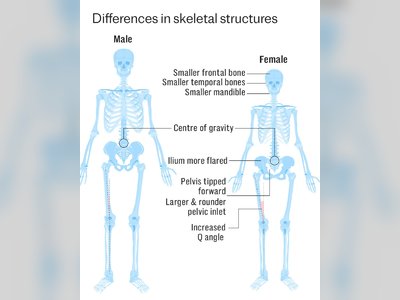
Bill Maher Shrugs at Trump’s White House Ballroom, Criticises Media Coverage
Late-night host says the project is ‘just a building’ and uses the spotlight to chastise press fixation over President Trump’s remodel
On the latest episode of his show, comedian and TV host Bill Maher declared he “doesn’t give a s—” about Donald Trump’s plan to remodel the East Wing of the White House into a privately funded ballroom and voiced frustration at how the media has treated the story.
“Everything is always on one side or the other,” he told the audience, referencing the initial coverage that cast the proposal as desecration of a national symbol before later conceding that previous presidents had made changes to the residence.
“It’s just a building, I think,” he added, while pointing out that state dinners are currently being held in tents.
Maher also noted that the ballroom renovation, estimated at up to $300 million and claimed to be financed by private donors, is not subsidised by taxpayer funds — a detail he said should temper outrage over the project.
He argued that the real fuss should be over substance, not symbolism.
He did, however, revisit the broader concern about the symbolism of the upgrade, stating: “The symbolism is he’s not leaving.
That’s what bothers me.
Who puts in a giant ballroom if you’re leaving?” The remark underscores a deeper unease about permanence, power and the evolving nature of presidential residence.
Earlier in the discussion Maher sparred with former Republican National Committee chair Michael Steele, who dismissed the remodel as “the destruction of a symbol of this government.” Maher countered: “You’re talking about the White House?
Oh, it’s a building, Mike.” Steele responded that for many Americans the White House is not just a building but a national touchpoint.
While Maher’s tone was casual and dismissive of the remodel per se, his remarks reveal a mixture of detachment from the spectacle and concern about its broader implications.
The segment suggests that the media focus may be missing larger governance questions in favour of architectural drama.
By reframing the debate from building to behaviour, Maher subtly shifts the conversation to institutional norms and the role of the presidency — even as he sidesteps the shouting over swords of design.
The real issue, he says, is less the ballroom than what it represents about power and permanence in Washington.
“Everything is always on one side or the other,” he told the audience, referencing the initial coverage that cast the proposal as desecration of a national symbol before later conceding that previous presidents had made changes to the residence.
“It’s just a building, I think,” he added, while pointing out that state dinners are currently being held in tents.
Maher also noted that the ballroom renovation, estimated at up to $300 million and claimed to be financed by private donors, is not subsidised by taxpayer funds — a detail he said should temper outrage over the project.
He argued that the real fuss should be over substance, not symbolism.
He did, however, revisit the broader concern about the symbolism of the upgrade, stating: “The symbolism is he’s not leaving.
That’s what bothers me.
Who puts in a giant ballroom if you’re leaving?” The remark underscores a deeper unease about permanence, power and the evolving nature of presidential residence.
Earlier in the discussion Maher sparred with former Republican National Committee chair Michael Steele, who dismissed the remodel as “the destruction of a symbol of this government.” Maher countered: “You’re talking about the White House?
Oh, it’s a building, Mike.” Steele responded that for many Americans the White House is not just a building but a national touchpoint.
While Maher’s tone was casual and dismissive of the remodel per se, his remarks reveal a mixture of detachment from the spectacle and concern about its broader implications.
The segment suggests that the media focus may be missing larger governance questions in favour of architectural drama.
By reframing the debate from building to behaviour, Maher subtly shifts the conversation to institutional norms and the role of the presidency — even as he sidesteps the shouting over swords of design.
The real issue, he says, is less the ballroom than what it represents about power and permanence in Washington.












